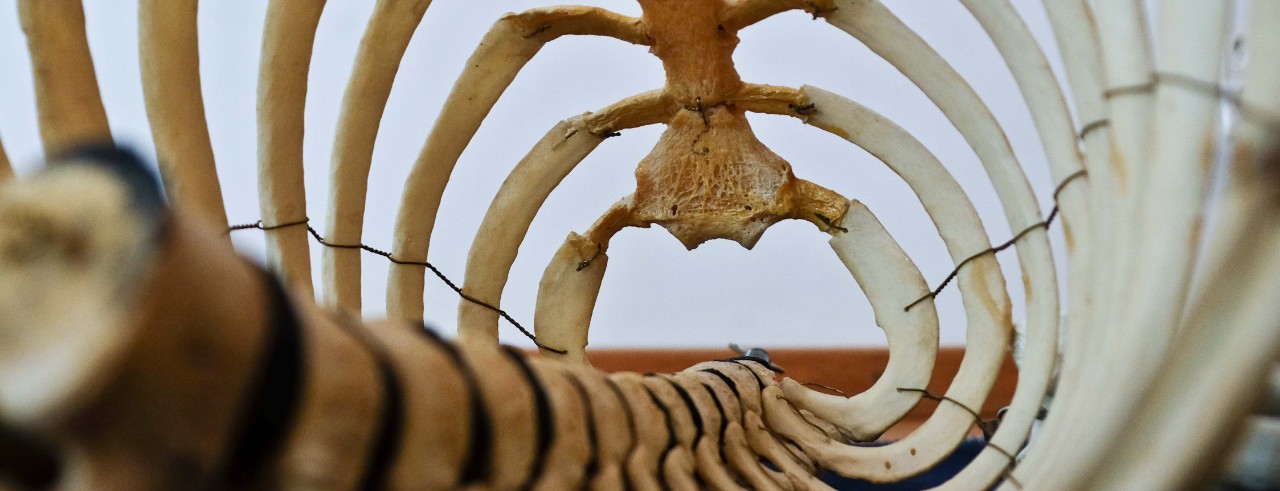
UC researchers study ‘liquid biopsy’
A new trial may help identify ways to determine cancer recurrence without surgery
Researchers at the University of Cincinnati are investigating a new way to explore suspicious brain masses, potentially eliminating the need for unnecessary surgery and worry for patients.
Matthew Garrett, MD, PhD, assistant professor of neurosurgery, UC Health neurosurgeon and a member of the UC Gardner Neuroscience Institute, is studying a unique procedure, called a liquid biopsy, for what may appear to be a recurrent brain tumor on a scan.
“Primary brain cancers, often called gliomas, are among the most difficult cancers to treat,” he says. “In the majority of cases, the visible tumor is removed and the remaining hidden cancer cells are treated with radiation and chemotherapy. It is known that one day the cancer will grow back, and thus, patients undergo MRI scans every few months to look for tumor regrowth.” However, this is where things get tricky.

Matthew Garrett, MD, PhD, assistant professor of neurosurgery, UC Health neurosurgeon and a member of the UC Gardner Neuroscience Institute. Credit/UC Creative + Brand
Garrett says MRI brain scans in these situations can be very unreliable.
“Sometimes the tumor grows back but it’s invisible on the MRI; other times, the MRI appears to show the tumor growing back, but there is no tumor, which can lead to unnecessary surgeries,” he continues. “This is why we decided to do something about this problem.”
Using what Garrett and his team call a “liquid biopsy,” scientists will look for DNA of tumor cells in the spinal fluid of patients; the amount of DNA extracted correlates with the amount of cancer in the brain.
“Cancers of all types release pieces of their DNA into their environment,” Garrett says. “This technology has the capacity to completely change the way we treat brain cancer. If this is true, not only can we prevent unnecessary brain surgeries based on false positive MRIs, but we might be able to intervene even earlier at the first sign of tumor growth and extend survival.”
In the case of glioblastoma, the most common and serious form of brain tumor, Garrett and his team are investigating whether measuring the amount of cancer DNA in a patient's spinal fluid will give doctors a more accurate way to determine what's happening inside their brain.
This technology has the capacity to completely change the way we treat brain cancer.
Matthew Garrett, MD, PhD
To determine how reliable this technology is, Garrett is working with colleagues Soma Sengupta, MD, PhD, associate professor of neurology at UC, UC Health neuro-oncologist and co-director of the UC Gardner Neuroscience Institute’s Brain Tumor Center, and Trish Wise-Draper, MD, PhD, associate professor of medicine at UC, UC Health oncologist and member of the UC Cancer Center.
Currently, they are recruiting patients who have been newly diagnosed with glioblastoma to volunteer for the study. During the initial tumor removal surgery, a small amount of spinal fluid (usually discarded during surgery) is saved and analyzed for cancer DNA. Over the following months and years, participants will be given the opportunity to donate additional samples of spinal fluid so the amount of cancer DNA can be measured.
“This is a fairly novel idea, and the trial here is investigator-initiated, meaning it is only being offered at UC,” Garrett says. “We hope that these results lead to a better method of determining recurrent cancer in earlier stages for patients and eliminate the need for invasive surgery.”
If you’re interested in enrolling, please contact Jasmine Parker.
Featured photo of spine courtesy of Meta Zahren/Unsplash.
Next Lives Here
The University of Cincinnati is classified as a Research 1 institution by the Carnegie Commission and is ranked in the National Science Foundation's Top-35 public research universities. UC's graduate students and faculty investigate problems and innovate solutions with real-world impact. Next Lives Here.
Related Stories
Bazinga! UC physicist cracks ‘Big Bang Theory’ problem
December 19, 2025
A physicist at the University of Cincinnati and his colleagues figured out something two of America’s most famous fictional physicists couldn’t: theoretically how to produce subatomic particles called axions in fusion reactors.
A year of momentum at UC Law—and the path ahead
December 19, 2025
College of Law Dean Haider Hamoudi reflects on 2025 successes and shares a message about the future.
University of Cincinnati’s IDD Education Center to Host Ninth Annual Red & Black Blast
December 18, 2025
The University of Cincinnati’s IDD Education Center will host its ninth annual Red & Black Blast on February 25, 2026, at Tangeman University Center. The signature event celebrates and supports the Center’s four programs—CEES, TAP, IMPACT Innovation, and RAAC—which create pathways in education, employment, and community life for individuals with intellectual and developmental disabilities (IDD).


